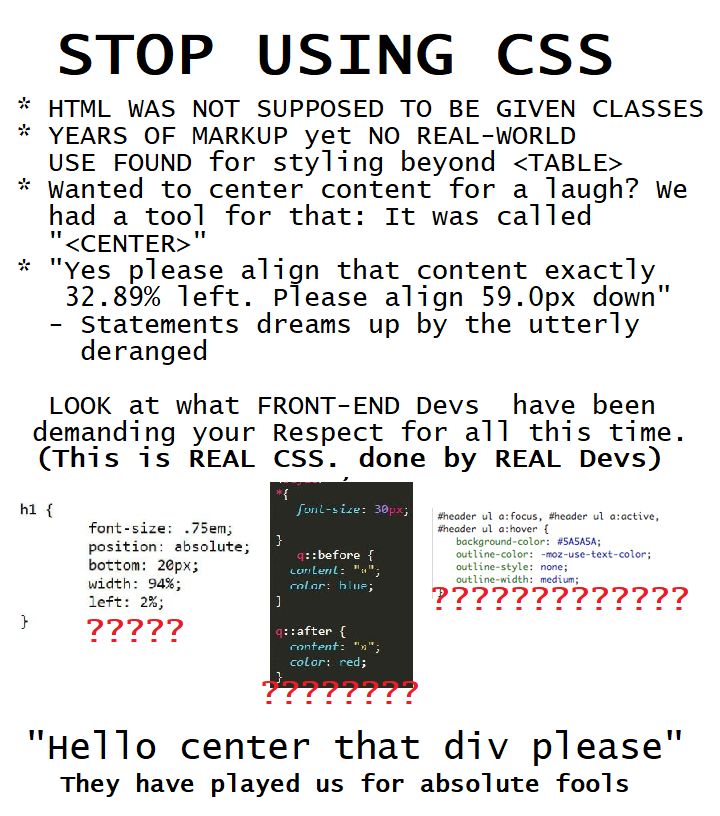As an amateur web designer in the 90s and early 2000s, this speaks to me. I stopped web development when CSS became popular and I couldn’t wrap my head around it.
Is there a petition I can sign to scrap all this nonsense modern web progress and go back to that beautiful, dial-up friendly HTML?
